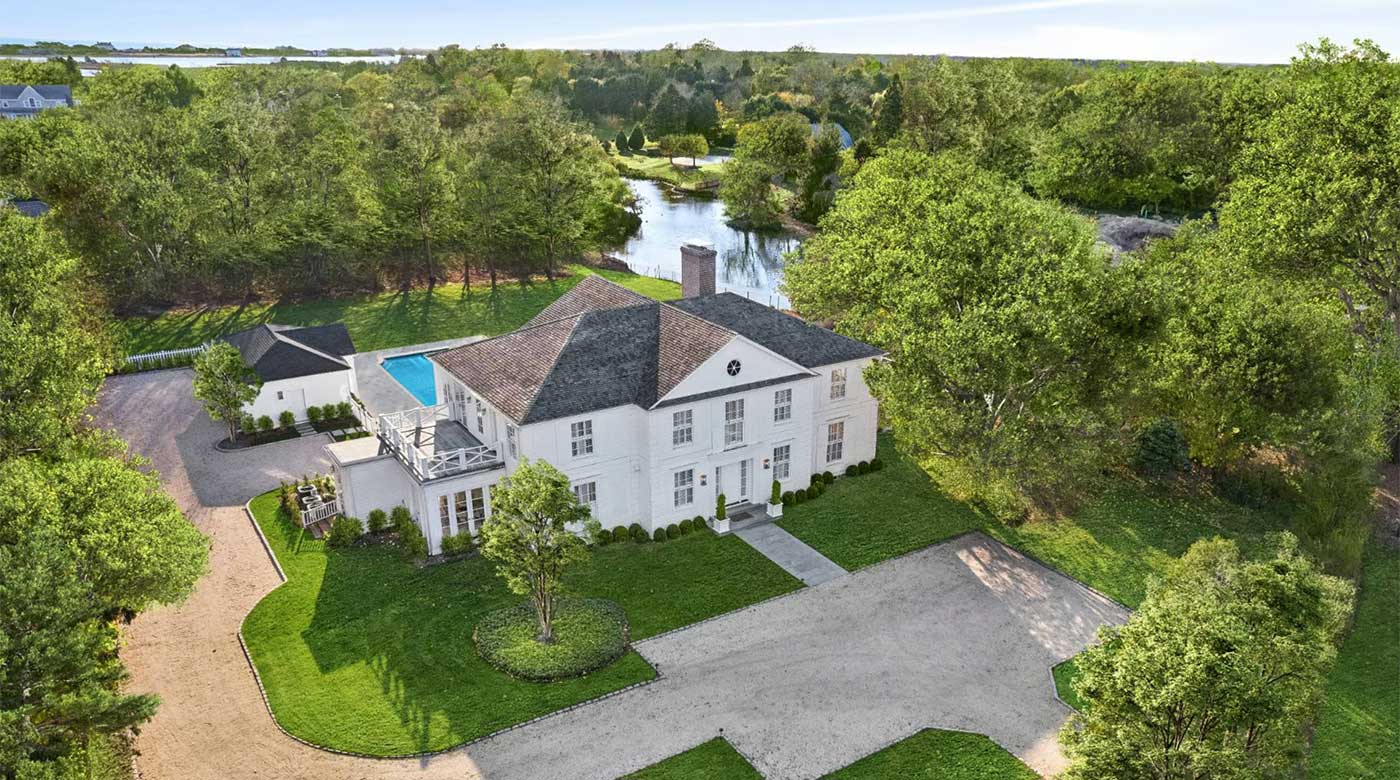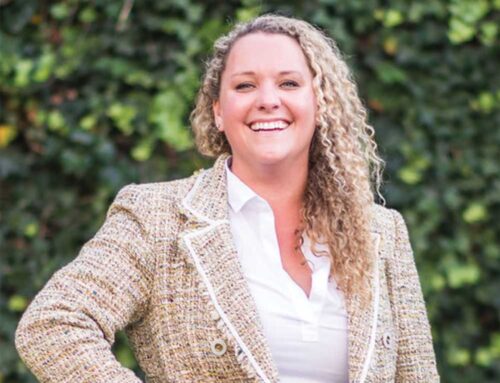Monthly Newsletter
MARCH 2025

CLEARING REGULATIONS
ON THE EAST END

What are they for?
What are clearing regulations for and why do municipalities enact them? Clearing regulations are designed to preserve native plantings on building lots as a means of protecting our air quality, ground water quality, and provide habitat for local flora and fauna. They do so by limiting the amount of native vegetation that may be removed from your property. Any realtor or real estate practitioner will tell you it’s also become one of the leading issues in local real estate transactions when properties become over-cleared and must be legalized through a process called revegetation.
What does clearing mean?
It is defined differently in each local jurisdiction, but the overall concept of clearing is the same. Land that is considered “cleared” is property that has been altered from its natural state by the removal of trees, brush, or other vegetation and/or ground cover, including land which is in lawn or from which the ground cover has been removed. This is an important definition because it means that areas where native trees have been left standing but the “understory” beneath them has been removed are cleared. The primary difference between East Hampton and Southampton Town regulations is that East Hampton Town’s regulations apply to all properties, with a few exceptions, whereas Southampton Town has enacted clearing regulations that apply only to properties located only in the Aquifer Protection Overlay District. [1) (1) Your property’s subdivision regulations may also contain private clearing restrictions, which are the same or more restrictive than that of the Town.
The current clearing rules:
In East Hampton Town, allowable clearing is calculated on most lots as follows:
| Lot Area (Square Feet) | Maximum Clearing Permitted |
|---|---|
| Up to and including 10,999 | 100% |
| From 11,000 to and including 19.999 |
10,999 square feet or 75%, whichever is greater |
| From 20,000 to and including 280,000 |
10,000 square feet + (lot area X 25%) |
| Greater than 280.000 | 80,000 squarefeet |
This formula applies unless you are clearing land within the Water Recharge Overlay District or the Harbor Protection Overlay District, which each have their own, more restrictive, rules for clearing. It’s imperative to know which Zoning District your property is situated in and which Overlay District regulations apply to the lot as well, if any. You can find this answer by reviewing the Zoning Map for each municipality or by calling your local building department.
Southampton Town’s clearing restrictions in the Aquifer Protection
Overlay District are as follows:
Residential lots and tracts.
For residential lots, the amount of disturbance of natural vegetation
shall not exceed the following percentages, except that:
- The pole portion of a flagpole lot shall be exempt for the total lot
area and the total amount of clearing permitted.
| Lot Size (Square feet) | Percentage of Site |
|---|---|
| 1 to 15,000 | 75% |
| 15,001 to 30,000 | 60% |
| 30,001 to 60,000 | 50% |
| 60,001 to 90,000 | 35% |
| 90,001 to 140,000 | 25% |
| 140.001 to 200,000 | 20% |
| 200,001 or greater | 15% |
What are flag lots?
Flag lots are a type of lot (commonly flag-shaped in configuration) in which street frontage is provided by a strip of land which is narrow in relation to the remainder of the lot and which extends from the main body of the lot to the street. One often misunderstood regulation that affects both locations is that the area of your property that is considered a “flag pole” or common driveway is NOT included when calculating the size of your lot. This means that the size of your lot is reduced by the size of your flag strip. How does this seemingly innocuous definition of lot area for clearing affect property owners? It directly affects the amount of allowable clearing by reducing the amount of lot area in the clearing formula.
Practical Example:
You are a potential purchaser of property in Southampton. You visit the property and it has a large, rolling, estate-like lawn in the front yard with native trees. There is an exceedingly long flag strip leading to the lot. The purchaser is not told that the flag portion of the lot must be deducted from lot area. They mistakenly believe the lot is within allowable clearing limits and they purchase it on that basis. They review the survey and see that it says the property is not over cleared because the surveyor has failed to deduct the area of the flagpole from your total lot area giving the false impression of compliance.
Unfortunately, these errors result in the property being so over cleared that one would need to replant up to the front door to come into compliance and/or the property owner may have to remove an entire structure to replant enough of the lot. The property is no longer eligible for any accessory structures, like pools, tennis courts, paddle courts, sheds, and decks because all the available clearing has been used and in order to get a permit for one of those structures, you would need to revegetate the lot. Moreover, that beautiful front lawn that led you to buy the property is not actually legal. What you bought is a house in the woods.
Potential Remedies:
It would seem the purchaser of this lot would be left with few, if any, options for resolving this matter without revegetating the entire property. However, in Southampton, you may elect to purchase a “development right” or a portion of one from someone on the open market. Each development right is given an equivalent amount of allowable clearing. You may purchase a credit, which sterilizes another property that is environmentally sensitive, and then apply to the Planning Board to obtain approval to exceed your allowable clearing on your property. Of course, the expense involved here may be a deterrent, but it also may be a better option than taking out structures on the lot to provide sufficient lot area for revegetation.
The other viable option is determining when the property was cleared. If the property was cleared before the relevant clearing law was adopted, the property may have grandfathered rights to keep such clearing.
Clearing Due Diligence:
It is imperative for purchasers to check with the Town or ensure your counsel knows to do so before signing a contract to determine if, based on available information, the property is within allowable clearing limits. The Town of East Hampton has a department that handles these inquiries in a very efficient manner. A simple email inquiry about the clearing on the lot you would like to purchase results in a return email and a map telling you whether the lot is within clearing limits, has grandfathered clearing limits, or is over cleared, all before you even enter a contract of sale.
UPDATE!
East Hampton Town Zoning Code
In our first newsletter, we outlined the first law adopted by East Hampton in its recent efforts to effectuate the Comprehensive Plan Update from 2005. The next important step in this process is a public hearing on a new gross floor area ratio for the entire town. That public hearing took place on Thursday, March 12, 2025. Local Introductory Law Number 5 of 2025 proposes to modify the existing formula for clearing of 10% of lot area plus 1,600 square feet to 7% of lot area plus 1,500 square feet or 10,000 square feet, whichever is less. The Town Board heard testimony from residents for more than two hours during the public hearing from individuals both in favor and opposed to this change in the law. The individuals in favor of the law argue that house sizes are out of control and having a negative impact on the community, including the quality of our groundwater. Those opposed to the law fear it will have a disproportionate impact on people who own smaller lots, many of which are year-round residents. The Board heard from many residents that the formula will not permit a house that will comfortably fit a family of four. The Board also heard from residents concerned that the law will have a negative impact on families who have adult children returning to live at home, due to the lack of affordable housing, and for those extended families caring for elderly loved ones. The Board has officially closed the public hearing, which means that there will be no more public testimony taken on the proposed local law. The Board has yet to take an official vote on the proposition. It’s important to note that this law, like the first one, has a “sunrise” date of July 1, 2025 and also a list of the following exemptions:
- A complete application submitted to the Building Department for a Building Permit requiring no other Town approvals.
- A valid building permit.
- A complete application submitted to the Zoning Board of Appeals, Planning Board or Architectural Review Board.
- An approval from the Zoning Board of Appeals, Planning Board, or Architectural Review Board.
As we saw when the gross floor area law was first adopted, it is likely property owners will be moving quickly to get permits and a foundation in the ground to ensure that his or her project is exempt from the new formula.
Please call us at 631.537.1155 with any questions about the new law, or if we can help one of your clients navigate this ever-changing zoning world.
*NOTE: Nothing contained herein shall be construed as legal advice and in no way should be relied upon without the advice of an attorney.



